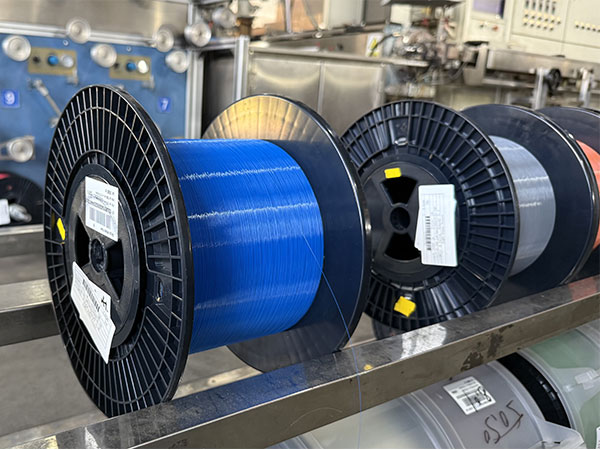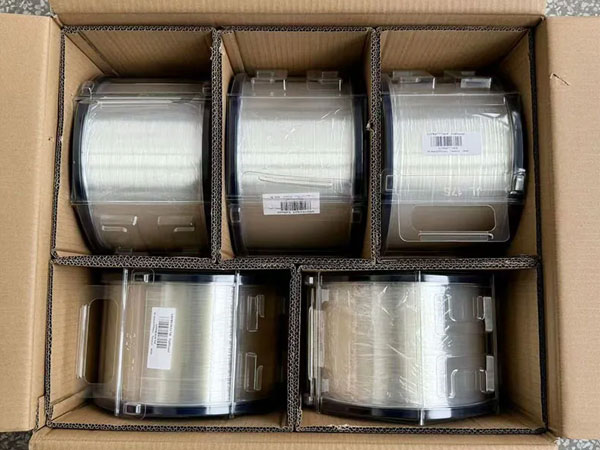In the rapidly evolving world of telecommunications and high-speed data transmission, bare optical fiber has emerged as a critical building block for next-generation networks. Unlike pre-terminated fiber cables, bare optical fiber refers to the uncoated, raw glass fiber strands without protective jacketing or connectors. Its simplicity, versatility, and cost-efficiency have made it a hot-selling product in industries ranging from 5G infrastructure to data centers. This article GL FIBER explores why bare optical fiber is in such high demand and how it’s shaping the future of connectivity.

What Is Bare Optical Fiber?
Bare optical fiber consists of ultra-thin strands of glass or plastic (typically 125–250 microns in diameter) designed to transmit data via light pulses. It lacks the protective coatings, buffers, or strength members found in finished fiber optic cables, making it a blank canvas for customized network solutions. The most common types include:
Single-mode bare fiber: Ideal for long-distance, high-bandwidth applications (e.g., telecom backbone networks).
Multi-mode bare fiber: Suited for short-range uses like data centers or LANs.
Why Is Bare Optical Fiber Gaining Popularity?
1. Cost-Effective Customization
Bare optical fiber allows network designers to tailor cable assemblies to specific needs. By adding only the necessary protective layers (e.g., tight buffers, armored sheaths), businesses reduce material waste and costs compared to pre-made cables.
2. 5G Network Expansion
The global rollout of 5G requires dense, high-capacity fiber backbones. Bare fiber provides the flexibility to design compact, high-performance cables for small cell deployments and urban infrastructure.
3. Data Center Scalability
Hyperscale data centers prioritize space efficiency and rapid upgrades. Bare fiber enables seamless integration into high-density cabling systems, supporting faster speeds like 400G and 800G.
4. FTTH (Fiber-to-the-Home) Growth
As ISPs expand fiber broadband access, bare fiber is essential for last-mile installations. Its lightweight design simplifies aerial or underground deployments in residential areas.
5. Emerging Technologies
From industrial IoT to autonomous vehicles, industries demand reliable, low-latency connectivity. Bare fiber serves as the foundation for specialized sensors and communication systems.
Key Applications of Bare Optical Fiber
Telecom Backbone Networks: Used to create low-loss, high-capacity links between cities or countries.
Fiber Optic Sensors: Deployed in harsh environments (oil/gas, aerospace) for temperature, pressure, or strain monitoring.
Medical Devices: Enables precise imaging tools like endoscopes and laser surgery systems.
Research & Development: Laboratories use bare fiber to prototype new optical technologies.
Challenges and Considerations
While bare optical fiber offers unmatched flexibility, it requires careful handling:
Fragility: Without protective coatings, the fiber is prone to damage during installation.
Expert Installation: Proper splicing, termination, and testing are critical to avoid signal loss.
Environmental Protection: Users must add UV-resistant jackets or waterproofing for outdoor use.
How to Choose the Right Bare Optical Fiber?
Fiber Type: Single-mode for long-distance; multi-mode for short-range.
Core/Cladding Size: Standard single-mode fibers have a 9/125µm core/cladding.
Material: Glass fibers dominate for performance; plastic optical fiber (POF) suits low-cost, short-range needs.
Supplier Reliability: Partner with manufacturers adhering to ITU-T/IEC standards.
Market Trends Driving Sales
According to industry reports, the global bare optical fiber market is projected to grow at a CAGR of 8.5% from 2023 to 2030. Key drivers include:
Government investments in broadband infrastructure.
Rising demand for cloud services and edge computing.
Advancements in fiber laser technologies.
Conclusion
Bare optical fiber’s role as a hot-selling commodity underscores its irreplaceability in modern network architecture. Its adaptability empowers engineers to design systems that meet exact technical, spatial, and budgetary requirements. As industries continue to push the boundaries of speed and reliability, bare fiber will remain at the heart of innovations in connectivity.
For businesses, investing in high-quality bare optical fiber—and partnering with skilled integrators—is crucial to staying competitive in the data-driven era.


